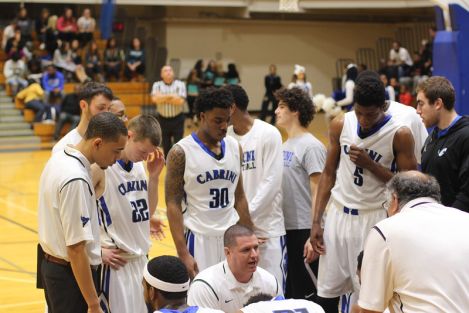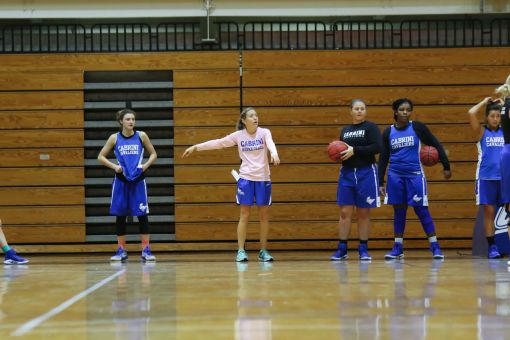
Being a college student athlete entails going through trial and error learning to balance out being a full-time scholar school and trying to prosper in a sport. The intensity of sports differs betweens the different divisions of the NCAA, but from division I to division III, there are athletes who dream and work towards making it to the professional ranks. Dustin Poole is a former d-III athlete that ran track at Cabrini University.
“With playing at a division III school you must always look forward and play your heart out, no matter if you and the school you go to is not getting recruited heavily,” Poole said. “I chose another path after feeling there was no way I can make it pro with playing at a division III school. In looking at retrospect that thought was terribly wrong seeing so many student athletes coming out of a division III school and making something out of themselves and qualifying themselves to make it pro.”
Saleem Brown, former assistant coach of Cabrini’s men’s basketball team, spoke to the difference between division III and the other divisions of the NCAA.
“Schools that offer a full ride scholarship to their athletes are now paying for their student athletes to come to college, but with d-III schools, it’s much different,” Brown said. “Students do not receive athletic money since we are division III. I think having athletics at division III helps out in morale on campus, retention which would bring a community of people together.”
Tim McDonald, head coach of the men’s basketball team at Cabrini, spoke about his standpoint on players attempting going pro at a division III school.
“For division III, 99.9 percent of the players college career is usually the end of their [athletic] career, we’ve had one player that moved on to play professionally, Aaron Walton Moss in Iceland,” McDonald said. The majority of student athletes, not just division III but in most divisions the end of their career is after they graduate. We have one guy that is currently on our team in Tyheim Monroe that is looking to go pro. It’s a goal for many of these players to play professionally, but realistically it is very difficult. We help them in anyway we can and definitely encourage them. We want our players to have confidence in themselves but like I always tell them be confident and not cocky.”
https://soundcloud.com/asawo-podcast/asawo-podcast-ep-15-wolves-come-out-at-night
Kate Pearson, head coach of Cabrini’s women’s basketball team also had words of encouragement for those on her team.
“Most of our players are using basketball here as there last ultimate goal into playing in the college level and we have not had anyone approaching us in interest of playing in any professional circuit,” Pearson said. “Throughout the past years we have had many former players going from having the athlete role into being coaches. We emphasize to our players that we are representing our self, our team and our school in a positive manner and every time we step on the court we do that with a winning attitude.”
Former NFL safety for the Philadelphia Eagles, Earl Wolff, had a different path to the pro’s since he came out of North Carolina State, which is a Division I school.
“I have never played d-III football, but from speaking to one of my good friends Rasheed Bailey, who is also a Philadelphia native, I can tell there is a difference with the two types of divisions,” Wolff said. “With division I, everyone is fully invested into playing- the players and the coaches. When you look at a d-III school you are not recruited as heavily. But I would say coaching is the biggest difference between the two divisions.”
There have been division III athletes that believed in the process and made a name for themselves in the professional ranks. NFL wide receiver for the Washington Redskins, Pierre Garcon once was a division III athlete. Hall of Fame NBA players Scottie Pippen and Dennis Rodman were also each division III athletes.

More than 480,000 athletes compete at each division of the NCAA. According to the NCAA, 1,208 college players were drafted out of the 1,852 draft spots available between football, men’s and women’s basketball, baseball, men’s ice hockey and men’s soccer. Baseball has the highest percentage of NCAA players to go pro with 9.7 percent, but they also have the highest number of draft spots available with 1,215 picks. The chance of earning a degree is significantly higher though with division III athletes having a 87 percent graduation success rate.
Even though going pro is a difficult task, athletes should not be discouraged and if it truly is their dream they should work towards it.
“It is very hard to take your talents to the next level but if the player is willing to put in the effort we are willing to help,” coach McDonald said.


